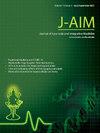Addressing clinical practice variability in Ayurveda: An urgent need for developing clinical practice guidelines
IF 1.9
Q3 INTEGRATIVE & COMPLEMENTARY MEDICINE
引用次数: 0
Abstract
Clinical practice guidelines (CPGs), which incorporate current evidence with the pondered judgment of experts, represent a promising approach to reducing unwarranted practice variation and promoting the application of research findings in clinical settings.
Globally, CPGs are developed by numerous local, national, and international organizations, and their production has significantly increased in the last two decades. In the realm of Traditional and Complementary Medicine (T&CM), CPGs are gaining popularity, offering evidence-based recommendations for implementing T&CM interventions in clinical practice.
While Korean medicine, Traditional Chinese medicine, and Kampo medicine have established robust CPGs guiding their healthcare practices and research in selected areas, the utilization of CPGs in any of the Ayush (term that represents the traditional and complementary systems of medicine, namely Ayurveda, Yoga & Naturopathy, Unani, Siddha, Sowa Rigpa and Homoeopathy) systems of medicine remains largely unexplored. This paper advocates for investigating the feasibility of CPGs as a promising research program, outlining areas where they could be implemented and the benefits they could bring. It represents one of the initial studies exploring the potential of CPGs in Ayurveda.
The authors argue that it is crucial for stakeholders to provide the necessary momentum to develop robust and effective CPGs that integrate research with clinical practice to enhance patient care.
解决阿育吠陀临床实践的可变性:迫切需要制定临床实践指南
临床实践指南(CPGs)结合了现有证据和专家的深思熟虑的判断,代表了一种有希望的方法,可以减少无根据的实践变化,促进研究成果在临床环境中的应用。全球范围内,cpg由许多地方、国家和国际组织开发,其产量在过去二十年中显着增加。在传统和补充医学(T&;CM)领域,CPGs越来越受欢迎,为在临床实践中实施T&;CM干预提供了基于证据的建议。虽然韩国医学、传统中医和汉布医学已经建立了强大的CPGs,在特定领域指导他们的医疗实践和研究,但CPGs在任何Ayush(代表传统和补充医学系统的术语,即阿育吠陀、瑜伽和自然疗法、乌纳尼、西达、索瓦Rigpa和顺势疗法)医学系统中的应用仍然很大程度上未被探索。本文主张调查CPGs作为一个有前途的研究计划的可行性,概述了他们可以实施的领域和他们可以带来的好处。它代表了探索阿育吠陀CPGs潜力的初步研究之一。作者认为,至关重要的是,利益相关者提供必要的动力,以发展强大而有效的CPGs,将研究与临床实践相结合,以加强患者护理。
本文章由计算机程序翻译,如有差异,请以英文原文为准。
求助全文
约1分钟内获得全文
求助全文
来源期刊

Journal of Ayurveda and Integrative Medicine
INTEGRATIVE & COMPLEMENTARY MEDICINE-
CiteScore
4.70
自引率
12.50%
发文量
136
审稿时长
30 weeks
 求助内容:
求助内容: 应助结果提醒方式:
应助结果提醒方式:


